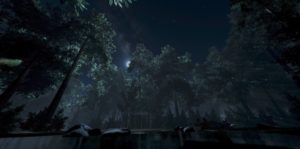‘Eight’ Is a Breakthrough for Virtual Reality in Classical Music

 “Eight” is an opera taken in through a virtual-reality headset. In about 15 minutes, with a genre-bending score that verges on pop (the singer-songwriter Kate Miller-Heidke is featured), it tells a poetic story of an old woman looking back on her life.
“Eight” is an opera taken in through a virtual-reality headset. In about 15 minutes, with a genre-bending score that verges on pop (the singer-songwriter Kate Miller-Heidke is featured), it tells a poetic story of an old woman looking back on her life.
She beckons you to follow her down a corridor with white walls; once you start walking, you almost never stop, even as the hallway seems to open up into a mountainside and the full cosmos. (In reality, this all takes place in a space no larger than a bedroom.) As viewer, you are very much part of the piece, your hands visible as they reach for a railing and, at one point, lift a red tablecloth to crawl underneath.
There’s nothing gimmicky about “Eight,” in part because the medium is fully integrated with the concept of the piece — a rarity in classical music, where VR is often applied to existing repertoire, modern technology superimposed on Mahler. (“Eight” was built from the ground up in collaboration with the firm The Virtual Dutch Men.)
How do you feel about the way technology ages in relation to your art?
The way we’re doing this, the software is completely hardware-independent. So we have a more fluid system. It will look better; we’ll do more upgrades. But we stop at some point. In 2030, everybody will be laughing about this. Then again, for me it’s not about technology. It’s about the story that people experience. If you look at old video artworks, on VHS, they still move me intensely. It’s not about the vehicle, but about the content.
See the full story here: https://www.nytimes.com/2019/07/05/arts/music/michel-van-der-aa-eight.html
Pages
- About Philip Lelyveld
- Mark and Addie Lelyveld Biographies
- Presentations and articles
- Tufts Alumni Bio